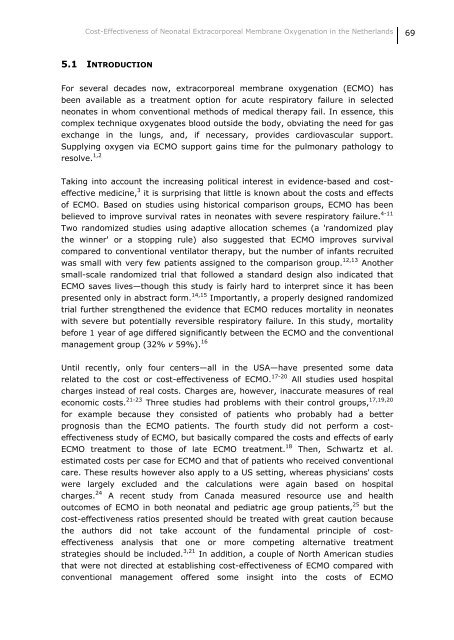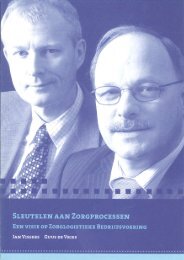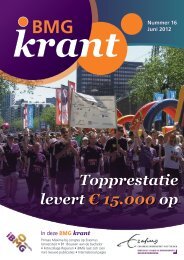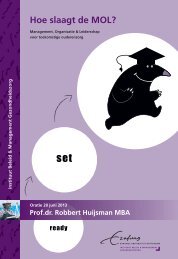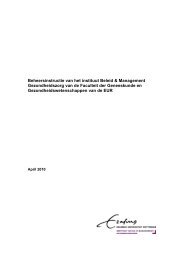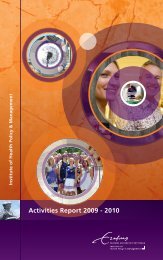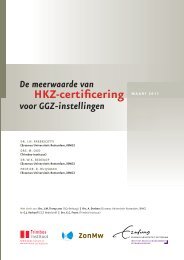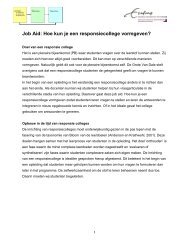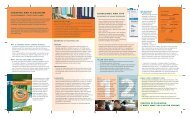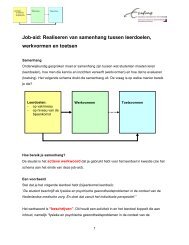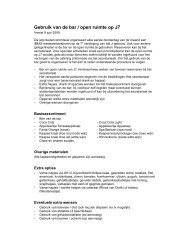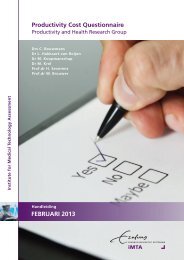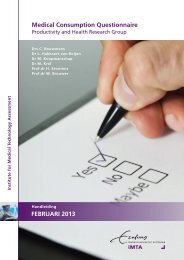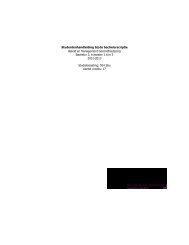Marten J. Poley - Erasmus Universiteit Rotterdam
Marten J. Poley - Erasmus Universiteit Rotterdam
Marten J. Poley - Erasmus Universiteit Rotterdam
- No tags were found...
Create successful ePaper yourself
Turn your PDF publications into a flip-book with our unique Google optimized e-Paper software.
Cost-Effectiveness of Neonatal Extracorporeal Membrane Oxygenation in the Netherlands 695.1 INTRODUCTIONFor several decades now, extracorporeal membrane oxygenation (ECMO) hasbeen available as a treatment option for acute respiratory failure in selectedneonates in whom conventional methods of medical therapy fail. In essence, thiscomplex technique oxygenates blood outside the body, obviating the need for gasexchange in the lungs, and, if necessary, provides cardiovascular support.Supplying oxygen via ECMO support gains time for the pulmonary pathology toresolve. 1,2Taking into account the increasing political interest in evidence-based and costeffectivemedicine, 3 it is surprising that little is known about the costs and effectsof ECMO. Based on studies using historical comparison groups, ECMO has beenbelieved to improve survival rates in neonates with severe respiratory failure. 4-11Two randomized studies using adaptive allocation schemes (a 'randomized playthe winner' or a stopping rule) also suggested that ECMO improves survivalcompared to conventional ventilator therapy, but the number of infants recruitedwas small with very few patients assigned to the comparison group. 12,13 Anothersmall-scale randomized trial that followed a standard design also indicated thatECMO saves lives—though this study is fairly hard to interpret since it has beenpresented only in abstract form. 14,15 Importantly, a properly designed randomizedtrial further strengthened the evidence that ECMO reduces mortality in neonateswith severe but potentially reversible respiratory failure. In this study, mortalitybefore 1 year of age differed significantly between the ECMO and the conventionalmanagement group (32% v 59%). 16Until recently, only four centers—all in the USA—have presented some datarelated to the cost or cost-effectiveness of ECMO. 17-20 All studies used hospitalcharges instead of real costs. Charges are, however, inaccurate measures of realeconomic costs. 21-23 Three studies had problems with their control groups, 17,19,20for example because they consisted of patients who probably had a betterprognosis than the ECMO patients. The fourth study did not perform a costeffectivenessstudy of ECMO, but basically compared the costs and effects of earlyECMO treatment to those of late ECMO treatment. 18 Then, Schwartz et al.estimated costs per case for ECMO and that of patients who received conventionalcare. These results however also apply to a US setting, whereas physicians' costswere largely excluded and the calculations were again based on hospitalcharges. 24 A recent study from Canada measured resource use and healthoutcomes of ECMO in both neonatal and pediatric age group patients, 25 but thecost-effectiveness ratios presented should be treated with great caution becausethe authors did not take account of the fundamental principle of costeffectivenessanalysis that one or more competing alternative treatmentstrategies should be included. 3,21 In addition, a couple of North American studiesthat were not directed at establishing cost-effectiveness of ECMO compared withconventional management offered some insight into the costs of ECMO


